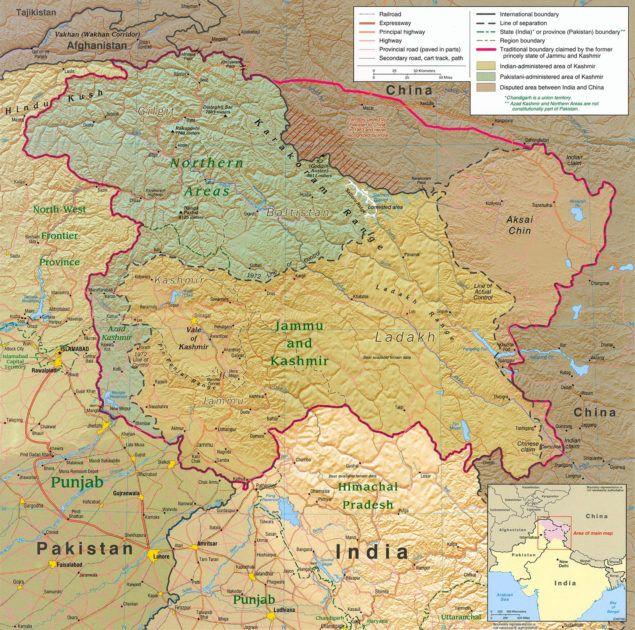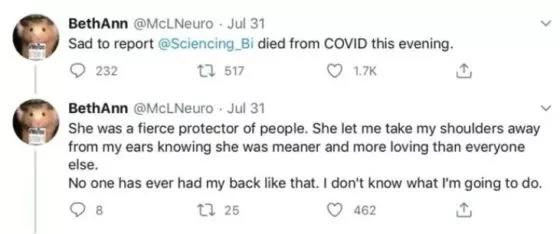From today’s Vermont Supreme Court majority opinion in Hinkson v. Stevens, written by Justice Beth Robinson and joined by Justices Harold Eaton and Marilyn Skoglund (retired):
Plaintiff [C. Paige Hinkson] lives in Stowe, Vermont with her husband C.D. and their teenage daughter. Plaintiff and C.D. co-founded a business, Transegy, LLC, that provides leadership development and executive coaching. Plaintiff’s office is in her home, and her personal cell phone number is listed as the contact number for the business. C.D. previously worked at a company called Inntopia.
Defendant [Stuart Stevens] lives in Stowe, Vermont. He is a writer, political strategist and media consultant who has a “reputation as an aggressive operator in his professional pursuits.” He is in a romantic relationship with L.S., who also lives in Stowe and has a teenage son who attends high school in the same class as plaintiff’s daughter.
In February 2017, plaintiff’s husband C.D. had a sexual encounter with defendant’s romantic partner L.S., who had been exploring potential employment opportunities with Inntopia. Whether this was a consensual encounter or an act of sexual assault is in dispute. Shortly after the incident, L.S. reported to defendant that C.D. sexually assaulted her. Defendant testified that it was “extraordinarily difficult” for him to see the pain L.S. was in. He saw a therapist to help him understand the experiences of victims of sexual violence and read many books addressing the subject. L.S. filed a sexual-harassment lawsuit against C.D. and Inntopia, which settled in May 2017. As part of the settlement, L.S. signed a nondisclosure agreement. Plaintiff was unaware of L.S.’s allegations and her husband’s infidelity until the lawsuit settled.
In April, before the settlement, plaintiff began receiving numerous calls from a number with no caller ID; the caller hung up if she answered the phone. She installed a program on her cell phone that can “unmask” telephone calls. The evidence at trial showed that between April 2017 and March 2018, defendant called her cell phone twenty-six times from a masked number. Defendant also called C.D.’s cell phone repeatedly during this period. In total, he called or texted plaintiff’s and C.D.’s cell phones a total of 151 times. Many of the phone calls took place in the evening, including calls after ten or eleven p.m….
In June 2017, defendant sent three shipments of books, addressed to C.D., to plaintiff and C.D.’s home address. The first shipment contained a book defendant had written about his father called The Last Season; Missoula: Rape and the Justice System in a College Town by Jon Krakauer; and I Never Called It Rape by Robin Warshaw. The second shipment contained Rape is Rape: How Denial, Distortion, and Victim Blaming Are Fueling a Hidden Acquaintance Rape Crisis by Jody Raphael and a note that read “Hi [C.D.], Enjoy your gift! From [defendant].” The third shipment contained Asking For It: The Alarming Rise of Rape Culture – and What We Can Do About It by Kate Harding.
Plaintiff opened the packages and was disturbed and upset to receive books on the topic of rape and with the word prominently displayed on the covers….
At some time during this period, plaintiff visited a coffee shop in Stowe to meet a friend who was running late. Plaintiff noticed defendant at the coffee shop with two to-go cups and a pastry bag. Rather than leaving, defendant remained in the store and sat two tables away, facing where she was sitting and staring at her. He did not drink the coffee or eat the food he had purchased. Plaintiff estimated that the encounter lasted for many minutes, presumably until her friend arrived.
Numerous articles were published about the sexual-assault allegations, including several by L.S. and defendant himself. In November 2017—when the masked calls to plaintiff’s phone were at their peak—defendant emailed plaintiff an article he had written for the Stowe Reporter entitled “What To Do With Bad Men: Shun Them.” The article was written in the wake of the #MeToo movement. Defendant wrote that he had “seen it in action recently where a man who prominently held himself out as a feminist and community leader has been quietly exposed as a serial assaulter of women.” He argued:
“[W]hat is the right way to react to a man in the community whom you know has hurt women? …
“My view is that the answer is a simple one: Shun these men. Do not allow them to return to normalcy, which is the great sanctuary they seek. Sadly, many spouses are drawn into this deception, used to try to gain sympathy or proof the man must not be ‘that bad.’ This is the path Bill Cosby’s wife has taken and it is not a rare one.”
Shortly after the third party filed the other sexual harassment lawsuit against Inntopia and C.D., L.S. published an article on the Daily Beast website entitled, “The NDA [Non-Disclosure Agreement] Protected Our Predator. I’m Breaking My Silence, Because Women Deserve Better.” The article discusses L.S.’s own lawsuit against C.D. and her support of the third party. Additional articles about both lawsuits followed. The Stowe Reporter has also published several articles about this stalking action.
On June 12, 2018, defendant sent an email to B.A., a friend of plaintiff’s family. The email questioned why B.A. continued to be friends with C.D. in light of the allegations against him. Defendant wrote that he was disappointed that B.A. was going to spend vacation time with C.D. over the summer. Defendant called C.D. a “master manipulator,” a “pathological liar,” and a “predator.” B.A. forwarded the email to plaintiff and C.D. Plaintiff filed the stalking complaint on June 21, 2018, shortly after receiving the forwarded email.
Based on plaintiff’s and B.A.’s testimony, as well as its own observations of plaintiff, the court found that “there can be little doubt as to the emotional distress experienced by [plaintiff]” as a result of defendant’s conduct. Plaintiff told B.A. that she did not feel safe in her home and community, and she testified that she did not eat or sleep well and that her routines had changed. She was emotionally distressed during the hearing and exhibited symptoms of panic during her deposition after being led to believe that defendant had moved closer to her home.
The trial court found defendant’s behavior to be stalking, defined by Vermont statute to mean
… engag[ing] purposefully in a course of conduct [defined as “two or more acts… in which a person follows, monitors, surveils, threatens, or makes threats about another person, or interferes with another person’s property”] directed at a specific person that the person engaging in the conduct knows or should know would cause a reasonable person to:
(A) fear for his or her safety or the safety of a family member; or
(B) suffer substantial emotional distress as evidenced by:
(i) a fear of unlawful sexual conduct, unlawful restraint, bodily injury, or death; or
(ii) significant modifications in the person’s actions or routines ….
The majority reversed, reasoning that,
- The phone calls were not “monitoring” and thus didn’t count as elements of a stalking course of conduct. “We can imagine a case in which an individual monitors another through these kinds of phone calls—for instance by calling a landline for the purpose of determining whether someone is home. However, the trial court made no findings explaining why defendant’s admittedly obnoxious conduct amounted to ‘monitoring,’ and there is no evidence that this was such a case.” “Consistent with the rule of lenity, we will not expand the definition of monitoring to include other forms of contact with defendant—even forms of contact that were disturbing to plaintiff or to a reasonable person in her situation.”
- The phone calls did not “constitute[] threats.” “Plaintiff testified that the phone calls made her feel afraid, but she did not testify that she understood defendant to be communicating a threat against her, or what the implied threat would be. Instead, she characterized the calls as ‘harassing’ her…. Although there may be contexts in which repeated masked calls could constitute threats, we conclude that plaintiff failed to show that these masked calls were threats under 12 V.S.A. § 5131(1).”
- The shipments of books, “which [plaintiffs] refers to as ‘RAPE books,'” were not threats (which the court construed as “refer[ring] to only threats of physical harm”). “Defendant’s sending the books could reasonably be construed as threatening social retribution against C.D. and plaintiff based on C.D.’s alleged sexual misconduct. Such threats may be deeply (and reasonably) disturbing to plaintiff, but cannot constitute predicate acts establishing a course of conduct under the statute. Defendant’s conduct may have been intrusive and bullying, but was not a threat of physical harm.”
- In particular, the books did not “constitute[] a threat to rape plaintiff.” “Plaintiff’s testimony regarding her fears after receiving the books was as follows: ‘It’s insane. I—I don’t know why he was sending books on rape to our house. I don’t know if it was like a, oh, you had sex with my girlfriend, guess what I’m going to do to your wife. Like, I had no idea. It freaked me out. I was really upset.'” “[T]he context of the deliveries makes that theory implausible…. The evidence … would support a finding that defendant’s aim was to shame and socially ostracize C.D. for his alleged sexual assault of defendant’s partner. It could even support a finding that defendant sought to shame plaintiff and harm her reputation in retaliation for her failing to ‘shun’ C.D. on account of the allegations. But it could not support a finding that the shipments of books expressed an intent to rape or otherwise physically harm plaintiff.”
- The emails (“one to C.D., one to plaintiff and C.D.’s friend B.A., and one to plaintiff attaching defendant’s article ‘What To Do With Bad Men: Shun Them'”) were not threats of physical harm, either.
- “Because we conclude that defendant’s emails, shipments of books, and phone calls could not be part of a course of conduct, only one instance of ‘monitoring’ remains—defendant’s act of sitting in a coffee shop and staring at plaintiff. We need not address the parties’ arguments regarding the coffee-shop incident, because a course of conduct must consist of ‘two or more acts.'”
Some state statutes also allow orders to be issued based on repeated unwanted contact with the plaintiff, but the Vermont statute doesn’t.
Chief Justice Paul Reiber, joined by Judge David Howard (retired), dissented, arguing that the stalking injunction statute should be read more broadly, but also arguing that the behavior was monitoring and threatening:
Defendant’s repeated “masked” phone calls, made late in the evening or at night, and within the context of defendant’s other conduct, can reasonably be considered as “monitoring” according to the plain language of the statute. As the majority notes, “monitor” may be defined as “watch[ing], keep[ing] track of, or check[ing] … for [a] special purpose.” Defendant’s actions fit within these definitions. “Monitoring” does not require that defendant effectively pinpointed plaintiff’s physical location, as the majority suggests, and no evidence or findings were necessary to show that defendant’s phone calls enabled him to “track plaintiff’s whereabouts.” …
The majority also holds that the shipments of books to plaintiff’s home were not a threat under the statute, stating that the “trial court did not find that the books were meant to communicate an intent to physically harm plaintiff.” I disagree. The court emphasized how defendant said he had studied “what it must be like to be a woman who had been the victim of sexual assault” and had been told that plaintiff was “going through a tough time” following allegations that her husband had sexually assaulted defendant’s partner. The trial court found that in that context, defendant “would have understood the implicit threat of potential retribution or retaliation that would have been perceived by a woman who received such books at her home.” Although the court’s language was not explicit, the court plainly found that the books were intended to communicate a threat to sexually assault plaintiff in the way that defendant’s partner had been allegedly assaulted….
I also disagree with the majority that only “true threats” are proscribed by the statute…. Regardless, in this case, I would hold that the trial court made a factual finding that defendant communicated a true threat here and that the finding is supported by the record….
from Latest – Reason.com https://ift.tt/31v3W1x
via IFTTT




